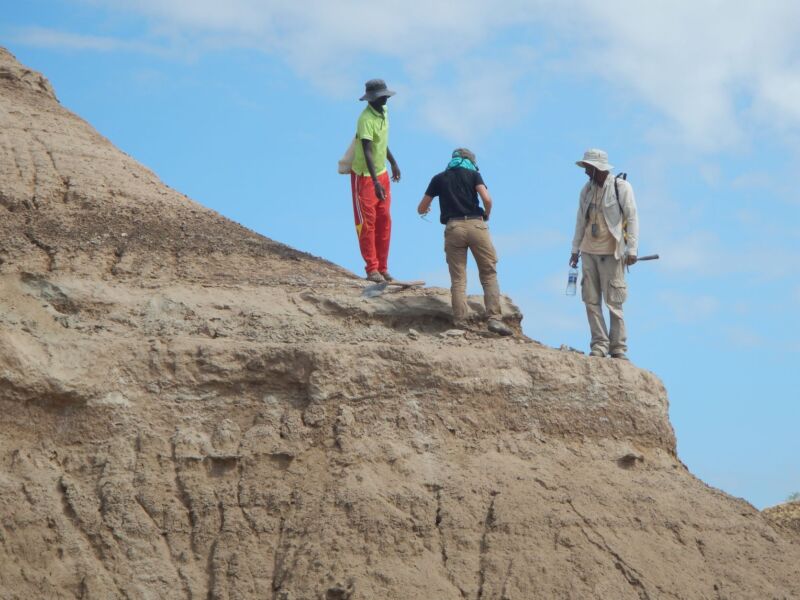The oldest known Homo sapiens fossil is about 36,000 years older than previously thought, according to a recent study. Volcanologists matched a layer of ash above the fossil skull to an eruption of southern Ethiopia’s Shala volcano 233,000 years ago. Their findings seem to line up well with other recent research about when our species’ branch of the family tree split from that of our nearest hominin relatives, the ancestors of the now-extinct Neanderthals and Denisovans.
Geochemical fingerprints on a Pleistocene crime scene
Finding the oldest member of our species hasn’t been easy for paleoanthropologists. There's only a handful of sites in Africa where early Homo sapiens fossils—anything older than about 100,000 years—have turned up, and some of the samples have been nearly impossible to pin a precise date on. At other sites, the fossils don’t quite have all the features that distinguish our skulls from those of our now-extinct hominin cousins: things like a high, round cranium (the round part of your skull that holds your brain) and a chin.
One fossil, a skull found near the Omo River in southern Ethiopia, does have all the hallmarks of anatomically modern humans; among other traits, Omo I has a chin and a tall cranium. The skull was buried (probably not on purpose) in a layer of sediment that was later covered by ash from at least one volcanic eruption. In theory, that ash should make it easy to measure the fossil’s minimum age.
“The age of Omo 1 was very uncertain,” Cambridge University volcanologist Celine Vidal told Ars. “In the last two decades, scientists have tried to date the ash layer found above the fossil, and this triggered a lot of debate.”
The radioactive isotope Argon-40 decays into the stable isotope Argon-39 at a steady rate, so by comparing the ratios of the two isotopes, scientists can measure how old a volcanic rock is. But the ash layer at the Omo Kibish site, called the Kamaya’s Hominid Site Tuff, is too fine-grained for argon isotope dating, a problem that has helped fuel the debate about Omo I’s age.
Vidal and her colleagues measured the relative amounts of several trace elements—chemicals that make up only a tiny fraction of the material—in a thick layer of volcanic ash that sat above the Omo I fossil. The chemical makeup of the ash grains at Omo Kibish closely matched rocky debris found near the Shala volcano, the largest caldera (volcanic lake) in the region.
Unlike the fine ash at Omo Kibish, the pumice at Shala is made of chunks of rock piled up to 20 meters thick thanks to ancient pyroclastic flows, and that is very date-able. The new work shows that the Shala volcano erupted violently about 233,000 years ago, collapsing into a caldera and scattering a 2-meter-thick blanket of volcanic ash across a wide swath of eastern Africa.
When the volcanic ash fell from the sky at what’s now the Omo River Valley in southern Ethiopia, it covered ground that already held the buried remains of at least one dead human. Omo I, in other words, must have died sometime before the eruption 233,000 years ago. “It confirms that our species was present in the Ethiopian Rift before 233,000 years ago,” Vidal told Ars.
Recent genetic and archaeological findings have shown that we probably became noticeably ourselves sometime between 300,000 and 200,000 years ago, so it makes sense that the oldest fossil member of our species would come from that time frame.



3175x175(CURRENT).thumb.jpg.b05acc060982b36f5891ba728e6d953c.jpg)

Recommended Comments
There are no comments to display.
Join the conversation
You can post now and register later. If you have an account, sign in now to post with your account.
Note: Your post will require moderator approval before it will be visible.